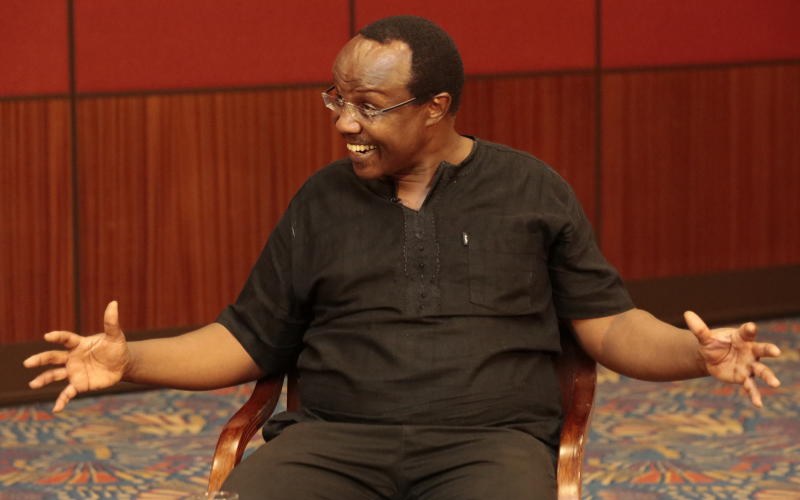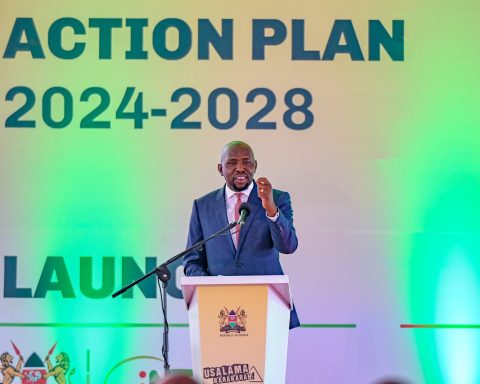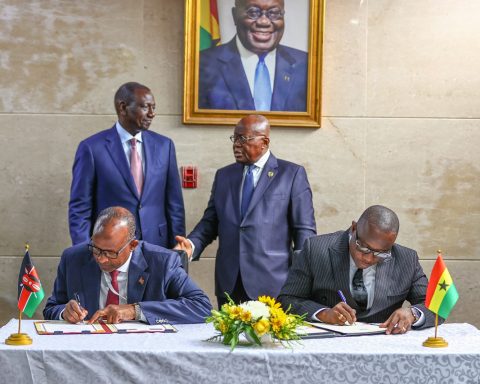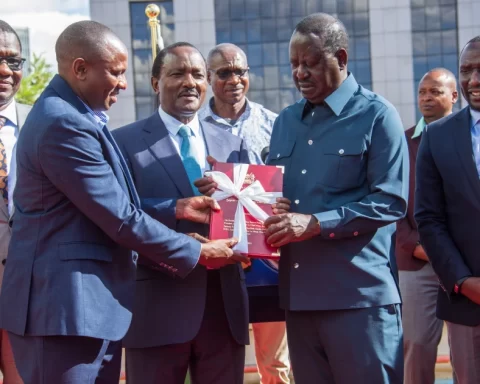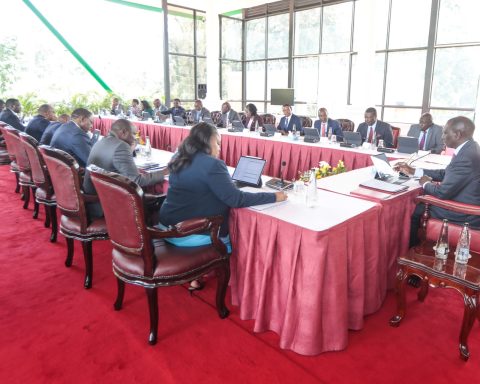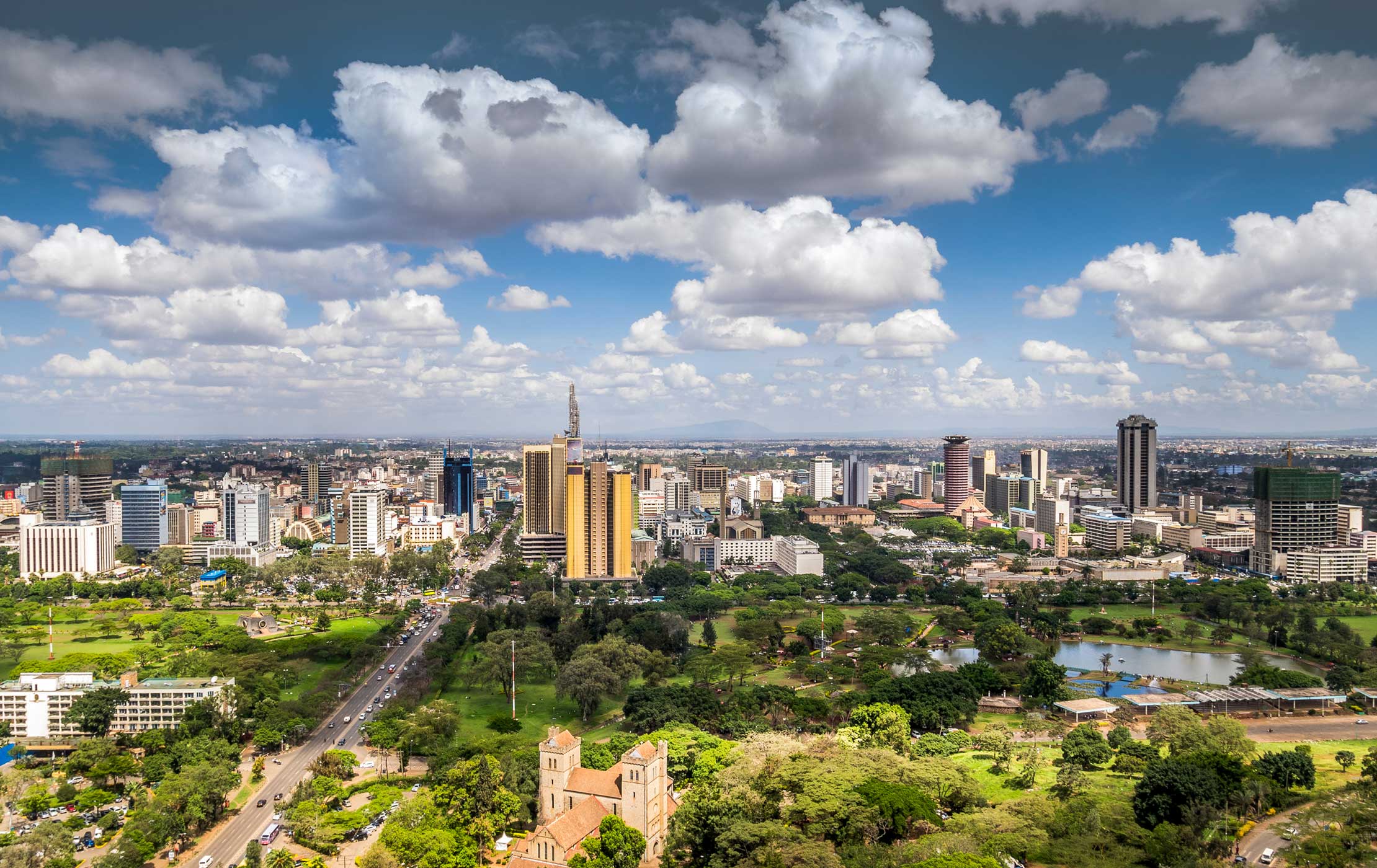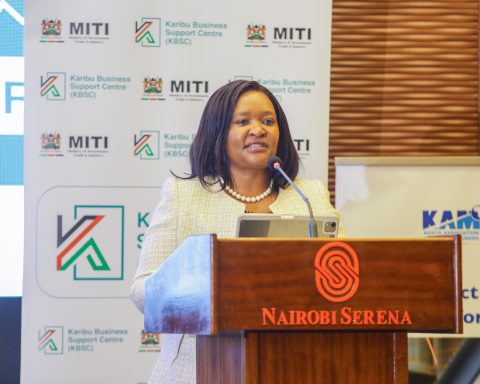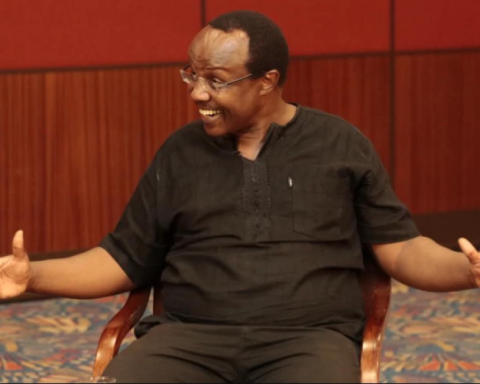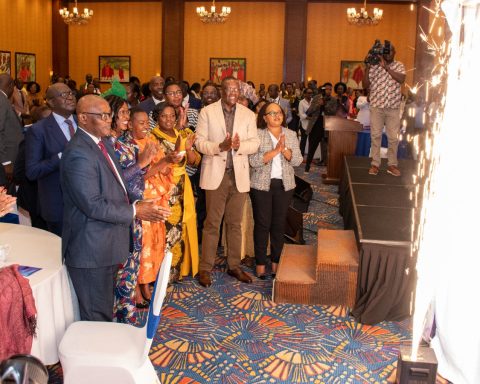DAVID NDII ON THE JUBILEE MONSTER OF CORRUPTION.
The Dam Has Broken. Time to Call Jubilee Plunder What It Is.
To budget anything from a quarter to a third of the country’s annual GDP for stealing — to then borrow it, steal it, feign outrage, compromise parliament, and diffuse public anger with ineffectual corruption investigations, again and again, and again – defies corruption. It is a crime against humanity.
Published on March 18, 2019, By Dr. Ndii.
The debut of this column in the E Review grappled with the Jubilee administration’s profligate spending.
As it happens, dams were one of the big red flags that popped up. Records show that during its first term, the Jubilee administration spent upwards of KSh 160 billion on water and irrigation projects.
These Arror and Kimwarer dams are costed at KSh 51 billion — let us say KSh 26 billion on average. The KSh 160 billion spent works out to at least six of these dams completed, or alternatively at least double that number under construction.
And KSh 26 billion is a huge amount of money for a dam. Thika Dam, commonly known as Ndaka-ini, our biggest reservoir for drinking water to date, cost US$80 million in the early `90s, equivalent of US$140m (i.e. adjusted for dollar inflation) or KSh 14 billion today.
These dam budgets are telling us that the cost of building dams has doubled in dollar terms, or that we are building infinitely grander dams. Neither is the case. We now know for sure that there were no dams built. This mindless plunder is replicated in virtually every sector.
The budget records show KSh 280 billion on power transmission lines, enough for 6,000 kilometers of 400 Kv lines (based on the cost of Marsabit-Suswa line), but information posted by KETRACO, the agency responsible for building them, shows only 2800 km of lines under construction, whose total cost is at most KSh 100 billion.
We are talking KSh 180 billion missing, an amount, I should add, of the same order of magnitude as the Eurobond money that the Auditor General could not find.
Overall, records show that KSh 2.5 trillion went through the development budget during Jubilee’s first term.
The biggest ticket item here is the SGR railway which cost KSh 350 billion. The remaining KSh 2.15 trillion works out to KSh 45 billion worth of development projects per county.
The money available to county governments over the same period would have enabled expenditure on average of KSh 6 billion on development projects. In effect, we should be seeing six times more national government development projects in each county as county government ones.
We now know for sure that there were no dams built. This mindless plunder is replicated in virtually every sector.
The budget records show KSh 280 billion on power transmission lines, enough for 6,000 kilometers of 400 Kv lines …but information posted by KETRACO, the agency responsible for building them, shows only 2800 km of lines under construction, whose total cost is KSh 100 billion.
We are talking KSh 180 billion missing, an amount, of the same order of magnitude as the Eurobond money that the Auditor General could not find.
Makueni county built a 200-bed Mother and Child hospital for a princely sum of Ksh. 135m.
Kibra MP Ken Okoth built and equipped a girl’s secondary school that’s been all the rage for Ksh. 48m.
A hospital like Makueni’s in every county is KSh 6.4 billion; a girls school like Kibra’s in every
constituency, KSh 14 billion.
Both combined add up to just over KSh 20 billion — about the money that has already been spent on the ghost dam projects.
If a national government has spent KSh 45 billion per county on development projects these two projects would not be the talk of the country.
There would be the equivalent of 300 Mother and Child hospitals in every county or alternately, 150 Kibra girl’s schools in every constituency.
Galana-Kulalu Irrigation project is on its deathbed. It is not yet known how much money has gone down that drain.
One senior Jubilee official said to me that it is their Goldenberg, to which I quipped that the competition for that dubious appellation would be strong.
The last mile connectivity project was one of Jubilee’s flagship projects: over 800,000 connections are dormant.
The connected households have never switched on the power. This should not surprise.
Most of these households cannot afford electrical appliances other than a few lightbulbs that they would use only for three or four hours a day.
It would have been infinitely more sensible and cost-effective to mandate the Rural Electrification Authority to serve these rural hamlets with micro-grids and stand-alone domestic solar installations.
The Kenya Power and Lighting Company (KPLC) is now weighed down with the costs of maintaining these loss-making connections. These costs have to be passed on to consumers.
And this is over and above the costs of carrying the excess generation capacity courtesy of the equally hare-brained if-we-build-it-they will come 5000 MW drive that has now been abandoned.
It has been a long climb for KPLC to recover from the plunder of the Moi regime.
Makueni County built a 200-bed Mother and Child hospital for the princely sum of KSh 135 million. Kibra MP Ken Okoth built and equipped a girl’s secondary school that’s been all the rage for KSh 48 million.
A hospital like Makueni’s in every county is KSh 6.4 billion; girls school like Kibra’s in every constituency, KSh 14 billion. Both combined add up to just over KSh 20 billion — about the money that has already been spent on the ghost dam projects.
This week, we have been entertained by the mysterious disappearance of 51 million liters of aviation fuel worth KSh 5 billion from the tanks of the Kenya Pipeline Company. This follows from a report that KPC lost 23 million liters worth Ksh 2.3 billion in 15 months.
Even for the KPC, historically one of the most profitable and cash-rich public enterprises, a KSh 7 billion hole is a crippling loss. When Jubilee took over, the project on the table was to upgrade the 14-
inch pipeline with a 16-inch one at a cost of KSh 16 billion. Jubilee scaled this up to a 20-inch one at a cost of KSh 48 billion, three times the mooted cost.
The pipeline was to be completed in 18 months — by 2016 that is. Costs have escalated, and it is still not complete. It has been reported that the corruption investigation in KPC covers 27 projects worth
KSh 95 billion. Most of this money is expensive foreign commercial loans.
It’s hard to see how KPC can remain solvent. We are looking at another black hole here of the same order of magnitude as Kenya Airways, if not bigger.
The mother of all Jubilee financial blackholes is indisputably the SGR. According to Compass International, an engineering and construction consultancy, the benchmark cost for a new single-track high-speed rail at between US$997,000 and US$ 1.13m per km, plus cost of signaling infrastructure at between US$154,700 and US$189,000 for a total of US$1.15 million to US$1.3 million.
The SGR is not an electrified high-speed rail, but we paid $6.7m per km, five times the high end of the benchmarking cost.
Galana-Kulalu Irrigation project is on its deathbed. It is not yet known how much money has gone down that drain.
One senior Jubilee official said to me that it is their Goldenberg, to which I quipped that the competition for that dubious appellation would be strong. After years of denial, a government task force has
established that the SGR is not viable.
The SGR was sold on bringing down the cost, and improving the efficiency, of freight. According to the said task force, the SGR has increased the cost of transporting a 20-foot container by 118 percent, from $650 (Ksh. 65,000) by road, to US$1,420 (Ksh.142,000) and by 149 percent for a 40-foot container from $850 (Ksh. 85,000) to US $2,120 (Ksh. 212,000).
There are two components in this cost escalation. First, the SGR tariff is set to try and repay the loans. Even then, the SGR is yet to cover operating costs, let alone generate an operating surplus that
can service debt.
Secondly, the SGR has introduced additional costs notably “last mile” cost of transporting containers from the railway terminal to the owner’s premises, as opposed to trucking which is port-to-door, as well as additional container handling logistics.
These challenges of integrating rail and seaport are universal and are part of the reason why the rail share of freight in the EU has declined from over 40 percent in the 70s to less than 20 percent today.
Even for the Kenya Pipeline Company, one of the most profitable and cash-rich public enterprises, a KSh 7 billion hole is a crippling loss.
When Jubilee took over, the project…to upgrade the 14-inch pipeline with a 16-inch one at a cost of KSh 16 billion. Jubilee scaled this up to a 20-inch one at a cost of KSh 48 billion, three times the mooted
cost. The pipeline was to be completed in 18 months – by 2016 that is.
Costs have escalated, and it is still not complete. The long and short of it is that SGR is increasingly demonstrating what this columnist and others have maintained from the outset— that it is a white elephant. Without being forced, people would not use it.
And if it were to charge a competitive tariff, it is doubtful that it would keep the trains running, let alone service its debt. I have opined before that the least costly option may be to mothball it, seeing as the debt will be paid by the taxpayer, we should not be made to pay four times namely, the debt, operational subsidy, higher freight cost and trucking industry jobs and incomes.
The next best thing is to take over the debt, cancel the Chinese management contract and leave it to swim or sink in the marketplace under the management of Kenya Railways.
The only beneficiary of this project is China. It is doubtful that the Jubilee administration can muster the resolve to bite the bullet on this one.
So we will continue to bleed. After years of denial, a government task force has established that the SGR is not viable. The SGR was old on bringing down the cost and improving the efficiency, of
freight.
According to the said task force, the SGR has increased the cost of transporting a 20-foot container by 118 percent, from $650 (Ksh.65,000) by road, to US$1,420 (Ksh. 142,000) and by 149 percent for a 40-foot container from $850 (Ksh. 85,000) to US $2,120 (Ksh. 212,000).
This is Uhuru Kenyatta’s legacy as it now stands. Mindless plunder and worthless vanity projects—a US$ 25 billion (Sh. 2.5 trillion) hole in the economy and counting, and contingent liabilities, financial booby traps if you like, Kenya Airways, Kenya Pipeline,
Kenya Power and others we don’t know of yet, that could go off at any minute.
This is Uhuru Kenyatta’s legacy as it now stands. Mindless plunder and worthless vanity projects—a US$ 25 billion (Sh. 2.5 trillion) hole in the economy and counting.
The penny is beginning to drop, and sections of the regime are now beginning to talk about a turn-around strategy that can salvage the President something of an economic legacy.
They have their work cut out. Economic crises of this nature are not solved by the same people who created them. Ethiopia’s EPDRF government came to this realization about a year ago.
Ethiopia was headed for a revolution such as unfolding next door in Sudan. Former Prime Minister Hailemariam Desalegn has recently intimated that he resigned to make it easier for the regime to
reform.
So far, the bet on a leadership change is paying off, even though the new Prime Minister’s magic touch is yet to be tested on the inevitable painful economic reforms.
The political honeymoon also appears to be ending. The penny is beginning to drop, and sections of the regime are now beginning to talk about a turn-around strategy that can salvage the President
something of an economic legacy. They have their work cut out.
Economic crises of this nature are not solved by the same people who created them. The rapprochement between Kenyatta and Raila Odinga a year ago, popularly known as the “handshake” offered an opportunity to engineer something similar. But as soon as they pledged to build bridges, Kenyatta set off to burn them.
A year later, no one seems to know where it is headed, other than hazy talk of a referendum, and holding the political ground as Kenyatta prosecutes yet another hypocritical and inept anti-corruption war, as opportunistic as it is ineffectual.
With toxic succession politics in full throttle, it is difficult to see how resolve and focus on radical economic reform can be mustered.
Amidst the entire dam hullabaloo, there was a small event last week that did not attract much attention.
The cornered Treasury CS took time out from his daily commute to the Directorate of Criminal Investigations to launch a private external audit of the Eurobond funds commissioned by the
Treasury.
No prizes for guessing that the audit sees no evil. The external audit is an exclusive constitutional mandate of the Auditor General. We all witnessed the President staring down at the Auditor General on his special audit ordered by parliament. It has yet to see the light of day.
The national government’s audit for the year remains qualified. There is no country where questions can be raised about two billion dollars of public money, and the president of the country acts about
it as nonchalantly as Kenyatta has unless there is direct complicity with the thieves.
Malaysia’s 1MDB and Mozambique’s Tuna sovereign bond frauds have unraveled.
This one will too, in the fullness of time. Kenyatta has plenty of reason to want to extend his influence beyond his term of office.
To plunder the way the Jubilee administration has, it has had to raze the public financial management system to the ground.
Without public financial accountability, there is no government, no economy, no country.
To budget anything from a quarter to a third of the country’s annual GDP for stealing — to then borrow it, steal it, feign outrage, compromise parliament, and diffuse public anger with ineffectual
corruption investigations, again and again, and again – defies corruption. It is a crime against humanity.
Yes, the economy is crumbling, but its turnaround is not the priority.
Getting rid of this monster called Jubilee is.
And here is Dr. Ndii in a KTN interview.
Interesting but I decided to put an end to the story because the article above is one of the most powerful pieces I have tried to digest in the fight for the economic and political health of our Jamhuri. That fight will never stop.
But here is the interview.
Adongo Ogony is a Human Rights Activist and a Writer who lives in Toronto, Canada

